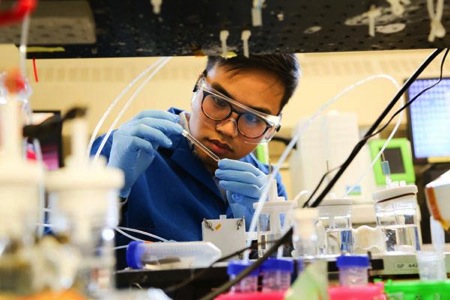
Researchers have created a new catalyst that brings them one step closer to artificial photosynthesis — a system that would use renewable energy to convert carbon dioxide (CO2) into stored chemical energy.
As in plants, their system consists of two linked chemical reactions: one that splits water (H2O) into protons and oxygen gas, and another that converts CO2 into carbon monoxide (CO). The CO can then be converted into hydrocarbon fuels through an established industrial process. The system would allow both the capture of carbon emissions and the storage of energy from solar or wind power.
Foundry scientists Yufeng Liang and David Prendergast performed theoretical modeling work used to interpret X-ray spectroscopy measurements made in the study, published Nov. 20 in Nature Chemistry. This work was done in support of a project originally proposed by a team from the University of Toronto.
Last year, the team developed catalysts for such reactions. But while one of their catalysts worked under neutral conditions, the other required high pH levels in order to be most active. That meant that when the two were combined, the overall process was not as efficient as it could be: energy was lost when moving charged particles between the two parts of the system.
The team has now overcome this problem by developing a new catalyst for the first reaction – the one that splits water into protons and oxygen gas. Unlike the previous catalyst, this one works at neutral pH, and under those conditions it performs better than any other catalyst previously reported.
The new catalyst is made of nickel, iron, cobalt and phosphorus, all elements that are low-cost and pose few safety hazards. It can be synthesized at room temperature using relatively inexpensive equipment, and the team showed that it remained stable as long as they tested it, a total of 100 hours.
The team employed X-ray experiments at the Canadian Light Source and Berkeley Lab’s Advanced Light Source (ALS) to reveal the working principle behind this new catalyst, mainly focusing on the nickel chemistry during the reaction itself. The Theory Facility at Berkeley Lab’s Molecular Foundry specializes in the interpretation of such X-ray results, connecting chemical intuition to the atomic and electronic structure models of working materials.

